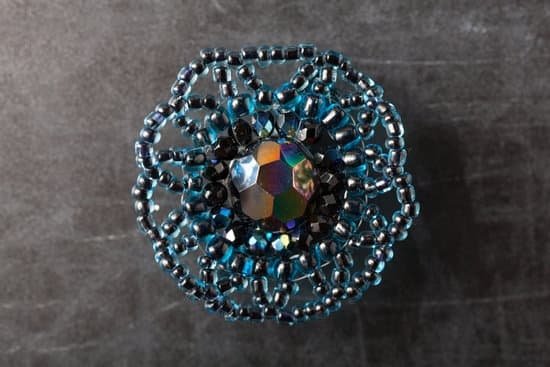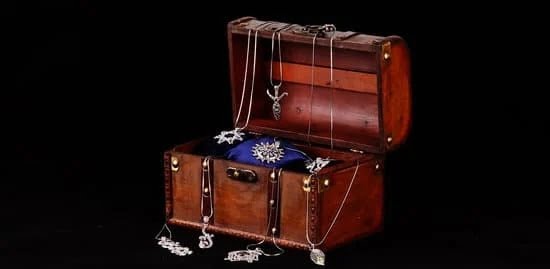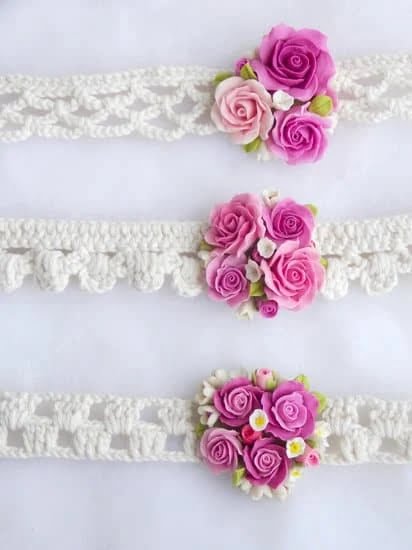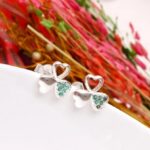Fine jewelry is often considered a valuable and significant investment, but many individuals may wonder: does fine jewelry depreciate over time? Understanding the factors that can affect the depreciation of fine jewelry is essential for both jewelry owners and enthusiasts. To delve deeper into this topic, it is important to first define what constitutes fine jewelry and why comprehending its depreciation is crucial.
Fine jewelry typically refers to pieces that are crafted from high-quality materials such as precious metals like gold or platinum, adorned with genuine gemstones like diamonds, emeralds, or sapphires. These items are not just accessories; they hold sentimental value and can be passed down through generations. Recognizing how their value changes over time can help individuals make informed decisions regarding their ownership and care.
The concept of depreciation in fine jewelry encompasses various elements that impact its economic worth. From the type of metals and gemstones used to the influence of market demand and trends, there are multiple factors at play. This article aims to explore these factors in depth, shedding light on how they contribute to the overall depreciation of fine jewelry.
Factors That Affect Jewelry Depreciation
When it comes to understanding the depreciation of fine jewelry, there are several key factors that come into play. One of the most significant factors is the type of metals and gemstones used in the piece.
For example, precious metals like gold and platinum tend to hold their value well over time, while gemstones such as diamonds and sapphires also maintain their worth. On the other hand, jewelry made with lower quality metals or semi-precious gemstones may experience greater depreciation.
Another important factor that contributes to the depreciation of fine jewelry is the brand or designer name associated with the piece. High-end brands and renowned designers often carry a certain level of prestige and demand in the market, which can help preserve the value of their jewelry collections. Conversely, lesser known brands or generic pieces may not hold their value as well over time.
Market demand and trends also play a significant role in determining the depreciation of fine jewelry. Just like any other product, changes in consumer preferences and fashion trends can affect the perceived value of certain styles or designs. Jewelry that aligns with current trends may experience higher demand and have better resale potential, while outdated or less popular styles may depreciate more quickly.
| Factors | Impact on Depreciation |
|---|---|
| Types of metals and gemstones | Different types can lead to varying degrees of depreciation |
| Brand or designer name | Luxury brands tend to retain value better than generic pieces |
| Market demand and trends | Current trends can impact resale potential and depreciation rates |
Understanding Market Value
How the Market Determines the Value of Fine Jewelry
The market value of fine jewelry is primarily determined by factors such as the rarity and desirability of the gemstones, the craftsmanship involved, and the reputation of the designer or brand. The demand for certain types of jewelry styles or materials can also significantly impact market value. Additionally, trends in fashion and design can influence the perceived value of fine jewelry items.
Economic Factors That Affect Jewelry Prices
Economic conditions play a crucial role in determining the market value of fine jewelry. When there is economic uncertainty or inflation, people may be more inclined to invest in tangible assets like gold or diamonds, potentially increasing their market value. On the other hand, during periods of economic stability and high consumer confidence, there may be an increase in demand for luxury goods leading to higher jewelry prices.
Impact on Depreciation
Understanding how these market dynamics influence the value of fine jewelry is essential when considering its potential depreciation over time. While some pieces may hold their value well due to timeless designs or historical significance, others may depreciate more rapidly if they fall out of fashion or are made with less desirable materials. Ultimately, recognizing these economic and market factors can help individuals make informed decisions when purchasing, maintaining, and ultimately reselling their fine jewelry items.
Preservation and Maintenance
Fine jewelry is a valuable and important asset that many individuals cherish and invest in. Understanding the factors that affect the depreciation of fine jewelry is crucial for jewelry owners. Preservation and maintenance play a significant role in maintaining the value of fine jewelry over time.
Tips for Preserving the Value of Fine Jewelry
Proper care and storage are essential to preserve the value of fine jewelry. Storing jewelry pieces in a clean, dry, and safe place can prevent damage such as scratches, tarnishing, or breakage. Additionally, keeping jewelry away from direct sunlight and harsh chemicals can help maintain its luster and appearance.
Regular inspection of fine jewelry by a professional is recommended to ensure that gemstones are secure, prongs are tight, and any damage is promptly addressed. Avoiding wearing fine jewelry during activities that may cause damage or harm to the pieces also helps in preserving their value.
Importance of Regular Maintenance and Cleaning
Regular cleaning is vital to maintain the brilliance and beauty of fine jewelry. Using mild soap and water with a soft brush can help remove dirt and grime from jewelry pieces without causing damage. Professional cleaning by a jeweler is also recommended to ensure thorough cleaning.
In addition to cleaning, regular maintenance such as re-polishing, re-plating, or restringing may be necessary for some types of fine jewelry. This helps in preventing wear and tear while also maintaining the overall quality and appearance of the pieces. By investing in proper preservation techniques and regular maintenance, owners can help mitigate depreciation effects on their valuable fine jewelry.
Resale Value
When it comes to fine jewelry, one common question that often arises is, “Does fine jewelry depreciate?” The answer to this question is not a simple yes or no. Several factors come into play when determining the resale value of fine jewelry. In essence, while some types of fine jewelry may depreciate in value over time, others may actually increase in value. Understanding these factors can help individuals make informed decisions about buying and selling fine jewelry.
One of the most significant factors that determine the resale value of fine jewelry is the quality of the materials used. High-quality metals such as gold, platinum, and silver tend to hold their value well over time. Similarly, gemstones like diamonds, sapphires, and rubies also have enduring value. On the other hand, jewelry made with lower-quality or less valuable materials may experience greater depreciation.
Another important consideration for resale value is the brand or designer name associated with the piece of jewelry. Certain luxury brands are known for producing pieces that hold their value or even appreciate over time due to their reputation for quality and craftsmanship. Conversely, generic or mass-produced jewelry items may not retain their value as well.
In addition to material quality and brand reputation, market demand and current trends also play a role in determining the resale value of fine jewelry. Jewelry styles that are currently popular are likely to fetch higher prices on the resale market compared to outdated designs. Likewise, unique or one-of-a-kind pieces often command higher resale values due to their rarity and desirability among collectors.
| Factor | Impact on Resale Value |
|---|---|
| Quality of Materials | Determines whether a piece will hold its value over time |
| Brand Name | Influences how well a piece retains its value based on reputation and craftsmanship |
| Market Demand and Trends | Affects how desirable a piece is on the resale market |
Investment Potential
Fine jewelry has long been considered a valuable investment, thanks to its timeless nature and the potential for appreciation over time. When considering investing in fine jewelry, it is important to understand the factors that can affect its depreciation and resale value.
Factors to consider when determining the investment potential of fine jewelry include:
- Rarity of gemstones: Gemstones such as diamonds, rubies, and sapphires are highly sought after and can retain their value or even appreciate over time.
- Brand or designer name: Fine jewelry from reputable designers or luxury brands often holds its value well, especially if it is a limited edition piece.
- Market demand and trends: Keeping an eye on current market trends and consumer demand for certain styles or types of jewelry can help determine the potential resale value.
In terms of investment comparison, while fine jewelry can hold its value over time, it is important to note that like any physical asset, it is subject to market fluctuations. In contrast, other forms of financial investments, such as stocks or bonds, may offer a more liquid and easily tradable option for those looking for rapid returns on investment. It’s also important to factor in the cost of maintenance and insurance when considering fine jewelry as an investment.
Personal Sentimental Value vs Market Value
Fine jewelry holds both monetary and sentimental value for many people. While understanding the market value of fine jewelry is important, it is also essential to consider the personal sentimental value attached to these pieces. Here are some factors to consider in balancing personal sentiment with market value:
- Sentimental value: Personal sentiment plays a significant role in determining the value of fine jewelry. Whether it’s an heirloom piece passed down through generations or a piece gifted for a special occasion, the sentimental attachment to jewelry can often outweigh its market value.
- Market value: The market value of fine jewelry is determined by various factors such as the quality of materials, craftsmanship, brand name, and current trends. Understanding these factors can provide insights into the potential resale value or investment worth of a piece of jewelry.
- Balancing both values: It is possible to strike a balance between personal sentiment and market value when assessing fine jewelry. For example, maintaining the quality and appearance of a piece through regular cleaning and maintenance can help preserve its market value while keeping its sentimental significance intact.
Ultimately, while understanding and considering the depreciation of fine jewelry is important from an investment and financial perspective, it is equally crucial to acknowledge and honor the personal connections and memories associated with these valuable pieces.
Conclusion
In conclusion, the question “Does fine jewelry depreciate?” is not a simple one to answer. The depreciation of fine jewelry is influenced by various factors, including the type of metals and gemstones used, the brand or designer name, and market demand and trends. Despite these factors, it’s important to understand that fine jewelry can hold its value well if properly cared for and maintained.
Understanding the market value of fine jewelry is crucial in determining its resale value. Economic factors, as well as the condition of the piece, play a significant role in how much a piece of jewelry can fetch on the market. Regular maintenance and cleaning also contribute to preserving the value of fine jewelry in the long run.
While some may view fine jewelry as an investment, it’s essential to consider this in comparison to other forms of investment. Fine jewelry can indeed increase in value over time if certain conditions are met, but it’s also important to balance this potential with sentimental value. Ultimately, fine jewelry carries both personal and market value, making it a unique asset for owners.
In summary, while there are various factors that can affect the depreciation of fine jewelry, it is clear that proper care and understanding of market dynamics play a crucial role in maintaining its value. For owners and enthusiasts alike, staying informed about these considerations can make a significant impact on their experience with fine jewelry.
Frequently Asked Questions
Is Fine Jewellery a Good Investment?
Fine jewelry can be a good investment under the right circumstances. Factors such as the quality of the materials, the brand or designer, and the current market demand can all play a role in determining whether fine jewelry will appreciate in value over time. It’s important to research and consider all these factors before investing in fine jewelry.
What Jewelry Does Not Depreciate?
Certain types of jewelry, such as high-quality diamonds, gemstones, and precious metals, are less likely to depreciate over time. These items tend to hold their value well, especially if they are well-maintained and come with proper documentation of their quality and authenticity.
Does Expensive Jewelry Depreciate?
Expensive jewelry does not always depreciate in value, but it can do so under certain circumstances. Factors such as changes in fashion trends, market demand, and the condition of the jewelry itself can all contribute to depreciation.
However, high-quality and timeless pieces from reputable brands or designers are more likely to retain their value over time. Proper care and maintenance also play a significant role in preserving the value of expensive jewelry.

Welcome to my jewelry blog! My name is Sarah and I am the owner of this blog.
I love making jewelry and sharing my creations with others.
So whether you’re someone who loves wearing jewelry yourself or simply enjoys learning about it, be sure to check out my blog for insightful posts on everything related to this exciting topic!





